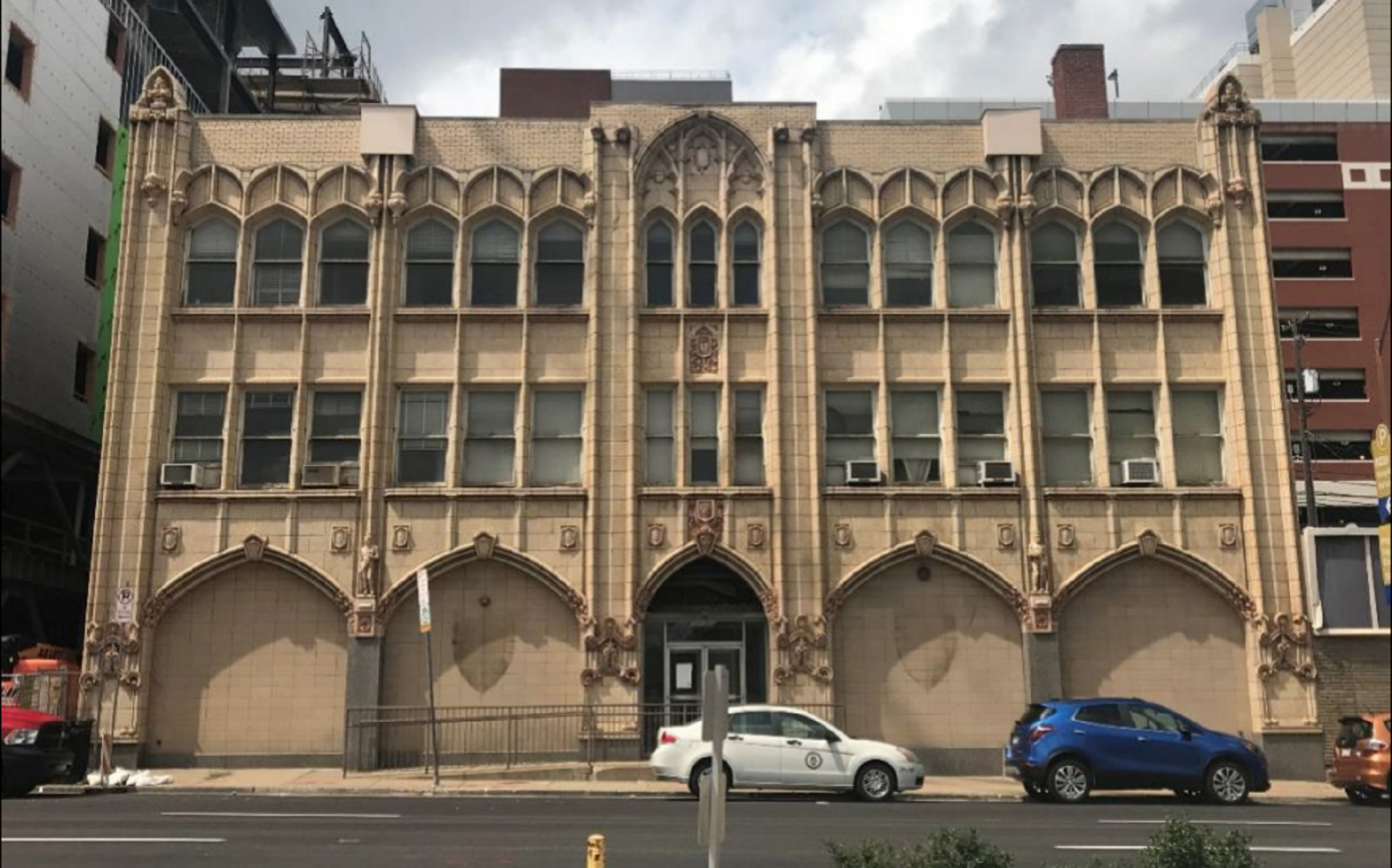
The Croatian Fraternal Union Building in Oakland was designed in the Flemish Gothic Revival Style and built beginning in 1928.
Brittany Reilly / Preservation Pittsburgh

The Croatian Fraternal Union Building in Oakland was designed in the Flemish Gothic Revival Style and built beginning in 1928.
Brittany Reilly / Preservation Pittsburgh

Brittany Reilly / Preservation Pittsburgh
The Croatian Fraternal Union Building in Oakland was designed in the Flemish Gothic Revival Style and built beginning in 1928.
(Pittsburgh) — Gracing Oakland with a spectacle of high arches, ornate pillars, and intricate stonework along its polished granite façade, the old Croatian Fraternal Union building at 3441 Forbes Avenue is one of two Pittsburgh sites on Preservation Pennsylvania’s 2020 At Risk list of endangered historic places.
In 2018, the building – formerly the national headquarters of the Croatian Fraternal Union (CFU) – was purchased by the University of Pittsburgh, which initially sought to demolish it for the construction of an Innovation District.
After hearing of the university’s plans, the Preserve Croatian Heritage Foundation, in collaboration with local nonprofit Preservation Pittsburgh, applied for the building to become a City of Pittsburgh Historic Landmark. The designation would require that any plans to demolish the building or modify its exterior would need to be reviewed by the City of Pittsburgh’s Historic Review Commission.
The nomination for historic landmark status has, however, been tabled while the three preservation groups discuss alternative solutions with the university. They hope to reach a mutual agreement in which the university’s goals may incorporate the original building’s design of scallop shells, dolphins, and Croatian laborers – as well as all that those motifs represent.
“If you look at it up close, you start thinking, ‘How did this building happen, how did it come about, and who built this building?’” said Melissa McSwigan, director emeritus of Preservation Pittsburgh and an Oakland native.
The Croatian immigrant community contributed to the growth of Pittsburgh’s population – and its workforce – between 1870 and 1910. As early as the 1880s, they had established a neighborhood enclave in Allegheny City (now the North Side). The Croatian Fraternal Union of America formed there in 1892, and it was officially chartered in 1894.
Between 1894 and 1900, the union grew from around 300 to over 8,000 members, reaching 30,000 members by 1912. It offered a number of economic benefits as well as social opportunities like scholarships, athletics, a radio program, and a Croatian language newspaper.

The Croatian Fraternal Union Building faces Forbes Avenue and includes gold terra cotta tile. (Pittsburgh Press / Courtesy Preservation Pittsburgh)
The union merged with three other Croatian-focused organizations that served other parts of the U.S. in 1926 and, soon after, they began plans for their national headquarters. In 1927, they selected architect Pierre A. Liesch (who had emigrated from Luxembourg in 1890) and purchased the Oakland property where his Flemish-Gothic work still stands today. In Pittsburgh, it is one of just three buildings with this unique architectural style.
“[It’s] important on both its architectural grounds as well as its cultural heritage grounds,” McSwigan said.
Julia Chain, associate director of Preservation Pennsylvania, echoed McSwigan’s summary of the building’s significance. “It tells a story of a group of people,” she said, “and it functions as a story for an entire cultural organization that operated out of this building.”
The building was the CFU’s national headquarters until 1961, when it sold to the Allegheny County Health Department and relocated to Wilkins Township in Monroeville. Today, it continues to operate, still publishing its newspaper and now curating a museum.
The other Pittsburgh location listed on Preservation Pennsylvania’s 2020 At Risk list is the Firstside Historic District, once a center for trade in the late 1800s and early 1900s. If buildings there were to be demolished, the area’s status on the National Register of Historic Places would be threatened – as would the tax breaks that go along with it. Chain, McSwigan, and their partners are nevertheless hopeful that both locations can be saved.
“I find there is nothing stronger than a community who supports a property,” said Chain. “Our voices can resonate with the owners of these buildings, and new solutions can be made.”
As discussions with the University of Pittsburgh continue, the old CFU building’s future hangs in the balance – but with the newfound support of Preservation Pennsylvania, that future might still include gothic arches, stone pillars, and a rich history.

A collection of interviews, photos, and music videos, featuring local musicians who have stopped by the WITF performance studio to share a little discussion and sound. Produced by WITF’s Joe Ulrich.
The days of journalism’s one-way street of simply producing stories for the public have long been over. Now, it’s time to find better ways to interact with you and ensure we meet your high standards of what a credible media organization should be.